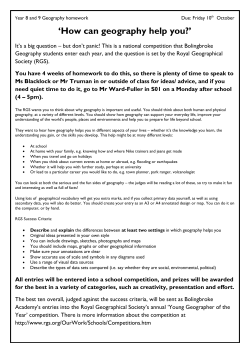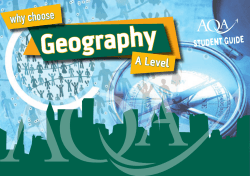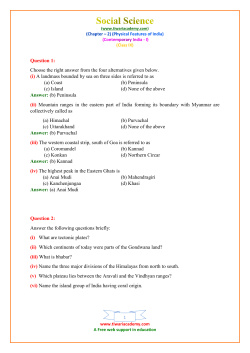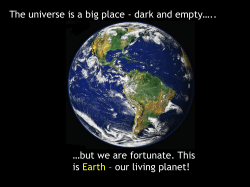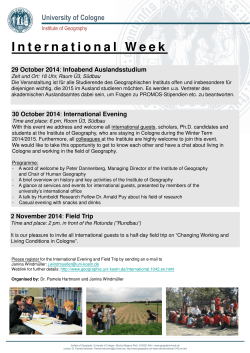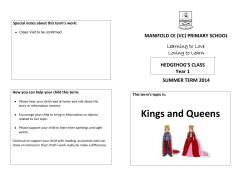
Ch. 19 Geography and the Early Settlement of China
Ch. 19 Geography and the Early Settlement of China • • • • • • • • • • • Introduction An Overview of China's Geography The Tibet-Qinghai Plateau The Northwestern Deserts The Northeastern Plain The North China Plain The Middle and Lower Chang Jiang Basins Early Settlement in Ancient China Ancient China's Isolation Different Regions, Different Ways of Life Summary Geography of China - Jan 23 Analyze the geographic location of China. How did the geographic features influence China’s history? • Get out history binder. • Organize India papers. • China Table of contents – Map – Unit 4 packet – Geography notes • Finish map • Work on Geography notes Geography of China - Jan 24 Analyze the geographic location of China. How did the geographic features influence China’s history? • China Table of contents – Map – Unit 4 packet – Geography notes • • • • • Finish map Work on Geography notes Ch 19 Assessment in Unit 4 packet Quiz on Tuesday 1/28 Homework: Create an ad – due 1/29 Coloring Directions for China Map • Follow the directions complete the map of China (Replaces last bullet on map directions) – Readability: 9 Pts total – Please label your map neatly and legibly. – Color the Seas blue. – Outline the labeled rivers in blue. – Color the Gobi Desert a shade of brown. – Color the Tibet-Quinghai Plateau in yellow. – Color the Chang Jiang Basins green. Introduction • Civilization flourished 1700 BCE - 220 BCE • Eastern Asia – Highest mountains - Himalayas – One of the world largest deserts - Taklimakan Desert – One of the longest rivers • Extreme Climate – Ice storms – Sand storms • Geography affected Chinese settlements culture, and communication An Overview of China's Geography Third largest country in the world 3.7 million sq. miles 1.2 billion people • Outer China – – – Western and northern parts of present-day China Bounded by the Himalaya Mountains Tibet-Qinghai Plateau • • • • – major geographical region world's largest plateau bitterly cold place to live Only 50 days a year without frost Northwestern Deserts • • Located in the northwest second lowest place in china – – • – Turfan Depression 505 feet below sea level raindrops evaporate before reading the ground Northeastern Plain • • • • Land of low hills and plains short, hot summers winters long and dry 5 months of freezing temperatures • Inner China – Southeastern part of presentday China – Closer to sea level – Land of rolling hills, river valleys, and plains – Rivers flow from the west • Enrich the soil by flooding • provide water for irrigation – two main regions • North China Plain – dry and cool – located in the north • Chang Jiang Basins – warm and wet – major region for growing rice The Tibet-Qinghai Plateau • • • South western part of Outer China Climate – Very cold – air is thin and dry – snow fall in summer – Vegetation • Sparse scrubs and grasses – Rivers • Huang He – Yellow River • Chang Jiang – Yangtze River – Animals • Antelopes and yaks • Wolves and wildcats Geography – Tallest mountain in the world - Mount Everest – Known as the Tibetan Plateau – Average elevation 13, 500 ft – Called the "Roof of the World" The Northwestern Deserts • Taklimakan Desert – – – – 105, 000 sq. miles One of the most dangerous deserts in the world Sand dunes shift and change Dangerous sandstorms • Two armies and 300 cites reported to be buried 600 ft under the sand • Gobi Desert – – – – over 500,000 square miles Very few sand dunes Stony Sparse vegetation The Northeastern Plain East of present-day Mongolia Called Inner Mongolia or Manchuria Low hills and plains Vegetation is prairie grass • Major Rivers – Liao River • shallow river • only navigated by small boats – Sungari • Carry larger boats – Freeze in winter – Used as roads • Climate – Short, warm summers • temp is 75 in summer – dry and cold in winter • temp is 10 in winter – Southern half - milder weather and more water – Too cold and dry to be a good place for growing crops • annual precipitation is about 20 inches The North China Plain • Flat region of grassland • Temperature range - very warm to quite cold – Average temp is 82 in summer – Average temp is 28 in winter – 23 inches precipitation • Called the Land of the Yellow Earth – ground covered by yellow limestone silt • comes from Gobi Desert • Carried by the wind to the plain – Silt gives the river its name • River – Huang He • source of many disasters • flooded more than 1,500 times – May be the world's muddiest river – Silt helps fertilize the land • good for grow crops • The Middle and Lower Chang Jiang Basins • Chang Jiang means "Long Areas of low, wet coastal plains – May have been rainforest in ancient times – Good for growing rice – 68 degrees in summer/ 39 degrees in winter – 41 inches of precipitation River" – Hundreds of tributaries – River used to moved goods between eastern and western areas in region – Starts in the high western mountains – Flows through 3 plains to a rich delta – Floods less than Huang He Early Settlement in Ancient China • First inhabitants lived in caves • Peking (Beijing) Man • Farming began mainly on the North China Plain in Inner China – Lived in villages near Huang He – Possessed water, fertile soil, and a moderate climate Ancient China's Isolation • Geography – Northwest - large deserts – Southwest natural barrier of towering mountains, rocky plateau, and cold climate – Narrow coastal plain linked Northeastern Plain to Inner China • Geography also made it difficult to govern China as a unified country • Different Regions, Different Ways of Life Outer China – Tibetan Plateau • Fewer people than Inner China • People moved frequently • Raised livestock, especially yaks – Meat and milk (butter & yogurt) – wool turned into heavy clothing – Hair woven into material for tents – Northwestern Deserts • Settled communities on the oases • Homes built out of mud • grew cotton, winter wheat and maize • foods were wheat noodles, bread and mutton – Northeastern Plain • prairie grass supported livestock • Settlers were nomads who raised sheep, goats, cattle, and horses • Main food - meat • Lived in tests • Nomads invaded the north China Plain to get supplies • Great Wall built to keep invaders out • Inner China – Larger more settled population – North China Plain • Grew wheat and millet • Raised cattle, sheep, oxen, pigs and chickens • Herded cattle, water buffalo, and horses • Built permanent homes of rammed earth – Chang Jiang Basins • limited areas for farming • lacked grazing land for raising animals • Rice main crop • Raised pigs and poultry • Ate seafood • Built permanent houses Summary • Five Geographic Regions – Outer China • Tibetan Plateau • Northwestern Deserts • Northeastern Plain – Inner China • North China Plain • Chang Jiang Basins • Physical features isolated Inner China • Trace history through several dynasties or ruling families
© Copyright 2025
